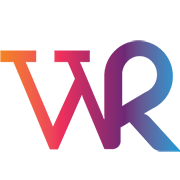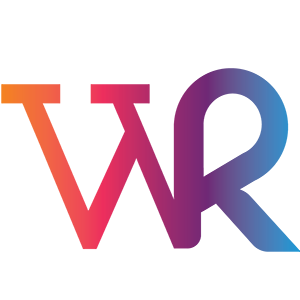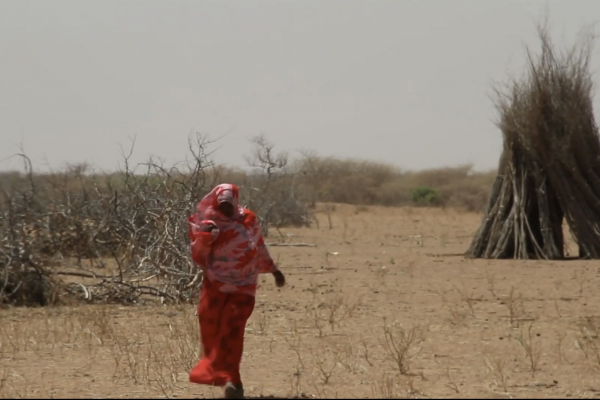The Next Great Disruption – Hybrid Work?

Microsoft releases findings and considerations from one year of remote work in the Work Trend Index. We’re on the brink of disruption as great as last year’s sudden shift to remote work: the move to hybrid work.
Just because of that Microsoft shared how they are evolving their own hybrid work strategy for their 160,000+ employees around the world with the first-annual Work Trend Index report that uncovers seven hybrid work trends every business leader must know as we enter a new era of work.
Here are the seven hybrid work trends that will shape the future of a hybrid work world:
- Flexible work is here to stay
Employees want the best of both worlds: over 70% of workers want flexible remote work options to continue, while over 65% are craving more in-person time with their teams. To prepare, 66% of business decision-makers are considering redesigning physical spaces to better accommodate hybrid work environments.
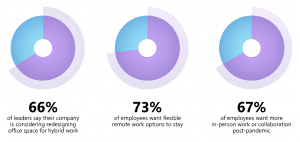
Hybrid work is inevitable. Business leaders are on the brink of major updates to accommodate what employees want: the best of both worlds.
- Leaders are out of touch with employees and need a wake-up call
Many business leaders are faring better than their employees. 61% of leaders say they are “thriving” right now — 23% points higher than those without decision-making authority. They also report building stronger relationships with colleagues and leadership, earning higher incomes, and taking all or more of their allotted vacation days.
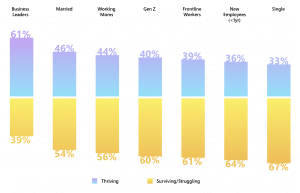
Business leaders are faring better than their employees. Most leaders in our study were male information workers with an established career – the near opposite of those struggling most.
- High productivity is masking an exhausted workforce
Self-assessed productivity has remained the same or higher for many employees over the past year, but at a human cost. One in five global survey respondents says their employer doesn’t care about their work-life balance. 54% feel overworked. 39% feel exhausted. And trillions of productivity signals from Microsoft 365 quantify the precise digital exhaustion workers are feeling.
- Gen Z is at risk and will need to be re-energized
An overlooked demographic appears to be suffering right now: Gen Z. 60% of this generation — those between the ages of 18 and 25 — say they are merely surviving or flat-out struggling right now.
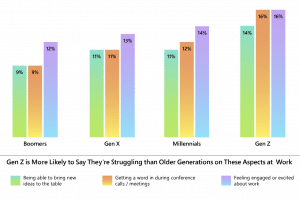
Gen Z is struggling more than other generations. The last year has been more challenging for Gen Z in many ways — from bringing new ideas to the table, to simply feeling engaged or excited about work.
- Shrinking networks are endangering innovation
The pandemic-driven isolation people feel in their personal lives is also happening at work.
Anonymized collaboration trends between billions of Outlook emails and Microsoft Teams meetings reveal a clear trend: the shift to remote shrunk our networks. At the onset of the pandemic, our analysis shows that interactions with our close networks at work increased, while interactions with our distant networks diminished.
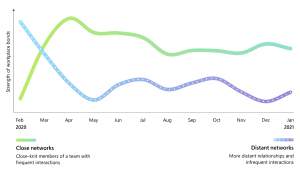
Teams are more siloed in a digital work world. Collaboration trends in Microsoft Teams and Outlook show that interactions with our immediate team, or close network, strengthened with the move to remote work.
- Authenticity will spur productivity and wellbeing
As people navigated unprecedented stress on the frontlines, balanced childcare and homeschool, worked from living rooms, quieted barking dogs, and pushed away curious cats, something changed: work became more human.
- Talent is everywhere in a hybrid work world
One of the brightest sides of the shift to remote work is that it widens the talent marketplace. Remote job postings on LinkedIn increased more than five times during the pandemic, and people are taking notice. 46% of remote workers we surveyed are planning to move to a new location in the year because they can now work remotely.
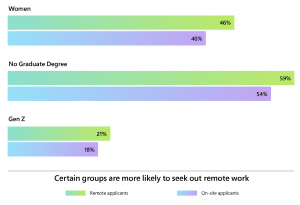
Remote opportunities are more attractive to diverse applicants. On LinkedIn, women, Gen Z, and those without a graduate degree are more likely to apply for remote versus on-site positions.
In addition to uncovering what’s at stake with the future of work, the Work Trend Index identifies five strategies for business leaders as they begin to make the necessary shift:
- Create a plan to empower people for extreme flexibility.
- Invest in space and technology to bridge the physical and digital worlds.
- Combat digital exhaustion from the top.
- Prioritize rebuilding social capital and culture.
- Rethink the employee experience to compete for the best and most diverse talent.
